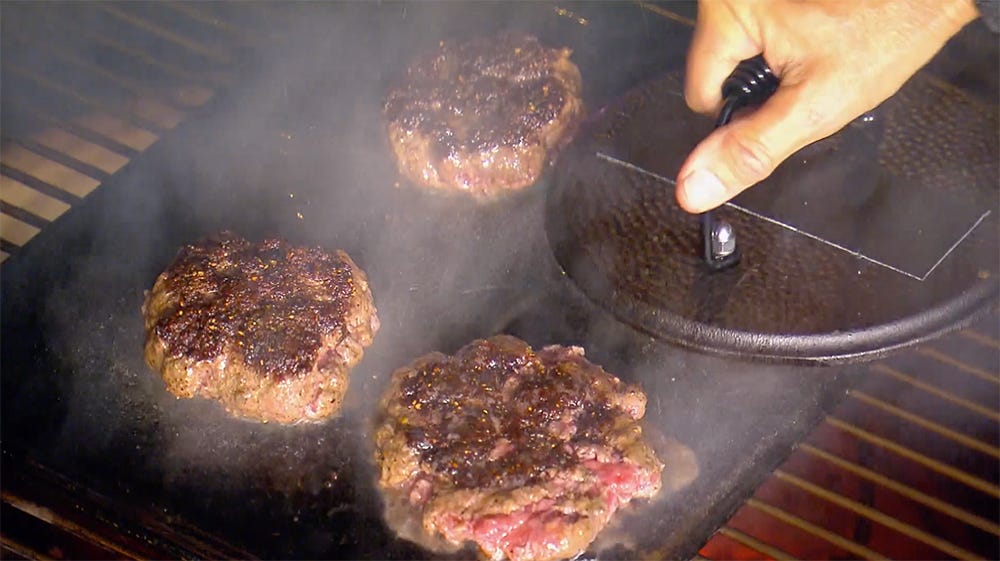In recent years, the term Smashburger has become a fixture in conversations about casual dining and street food. It doesn’t refer to a brand (though one exists with the same name), but to a specific burger preparation method – flattening a ball of ground beef onto a hot griddle to create a thin, crisp-edged patty. The technique is straightforward, but its impact on texture and flavor has made it a fast rising star among cooks and consumers.
What Exactly Is It?
A Smashburger begins with a small portion of ground beef—often 3 to 4 ounces—rolled into a ball and placed on a very hot flat surface. Within seconds, it’s pressed down firmly with a metal spatula or a burger press. The result is a thin patty with increased surface area, allowing for more browning, which is where much of the flavor develops.
This browning process, known as the Maillard reaction, is key. The seared crust contrasts with the interior of the patty, which remains relatively juicy if cooked quickly. Cheese is often added while the meat is still on the grill, and toppings are typically minimal: pickles, sliced onions, a simple sauce, and a soft bun are common choices.
Origins & Context
The smashburger style isn’t new. Variations of it have existed in American diners and roadside burger joints for decades. Places like Dairy Cheer in Kentucky or Steak ’n Shake have long served thin, crispy-edged patties cooked on flattops. In parts of the Midwest and the South, it was standard practice to flatten burgers on the griddle, particularly in Oklahoma, where onions were pressed into the meat as it cooked.
Kenji López-Alt, a well-known food science writer, helped popularize the concept in the 2010s by explaining the chemistry behind the crust. He demonstrated that smashing the patty within the first 30 seconds on a hot surface produces the best results. Any longer and juices start escaping prematurely. Chefs began emphasizing the method and explaining the science behind why it produced a particular result. The real interest came when food culture was shifting toward minimalism and a focus on core ingredients. The Smashburger fit that ethos well.
Why It Caught On
Several factors contributed to the broader popularity of smashburgers:
-
Speed: Thin patties cook quickly, making them suitable for fast-paced kitchens and pop-ups.
-
Flavor: The thin crust formed during searing delivers a strong umami note that appeals to many.
-
Simplicity: The preparation requires no specialized ingredients or equipment beyond a flat surface and a spatula.
-
Visuals: Videos and social media posts showing the sizzling and smashing process helped fuel interest, particularly among younger audiences.
In many ways, the rise of the Smashburger coincided with broader trends in food: a preference for “authentic” or “honest” cooking, fewer ingredients, and visible technique.
Regional Variations
Though the core method is consistent, there are several regional and stylistic variations:
-
Oklahoma-style: Thinly sliced onions are smashed into the patty while it cooks, resulting in a slightly sweet, browned topping integrated into the meat.
-
California-style: Often layered with lettuce, tomato, grilled onions, and a mayonnaise-based sauce, loosely modeled after the In-N-Out style.
-
Multiple stacks: Some vendors serve double or triple smashed patties in a single burger for added texture and flavor.
Some operators experiment with different beef blends (such as brisket or chuck), cheeses, or sauces, but the underlying structure remains the same.
International Reach
The Smashburger style has moved beyond its American roots. Burger restaurants and food trucks across Europe, Asia, and Australia now offer smashed patties as part of their menus. In some cases, it’s marketed as an alternative to thicker gourmet-style burgers; in others, it serves as a reinterpretation of fast food classics.
In the UK and Australia, small independent chains have adopted the method with local beef and often pair it with craft beer. In places like Thailand, Japan, and South Korea, the method appeals to both expats and locals interested in American food trends. Online exposure has played a key role in spreading awareness.
What Next?
Whether the Smashburger is a passing trend or a lasting staple is to be seen. Its minimal ingredient list and speed of preparation suggest it’s likely to remain popular, particularly in small kitchens or high-volume settings. As with many food trends, its staying power will depend on continued consumer interest and how restaurants adapt or innovate within the format. At its core, the Smashburger is a return to basic cooking techniques applied with care and attention. It’s not a reinvention of the burger, but a refinement of something that’s been around for a long time.
And very soon, you will be able to enjoy it at Churrasco Phuket Steakhouse ….
Image Credit: https://barbecuebible.com/recipe/the-smash-burger/
_ _ _
© CHURRASCO PHUKET STEAKHOUSE / ALL RIGHTS RESERVED
Reprinting, reposting & sharing allowed, in exchange for a backlink and credits
Churrasco Phuket Steakhouse serves affordable Wagyu and Black Angus steaks and burgers. We are open daily from 12noon to 11pm at Jungceylon Shopping Center in Patong / Phuket.
We are family-friendly and offer free parking and Wi-Fi for guests. See our menus, reserve your table, find our location, and check all guest reviews here:
https://ChurrascoPhuket.com/
#Churrascophuket #jungceylon #phuketsteakhouse #affordablewagyu #wagyu

